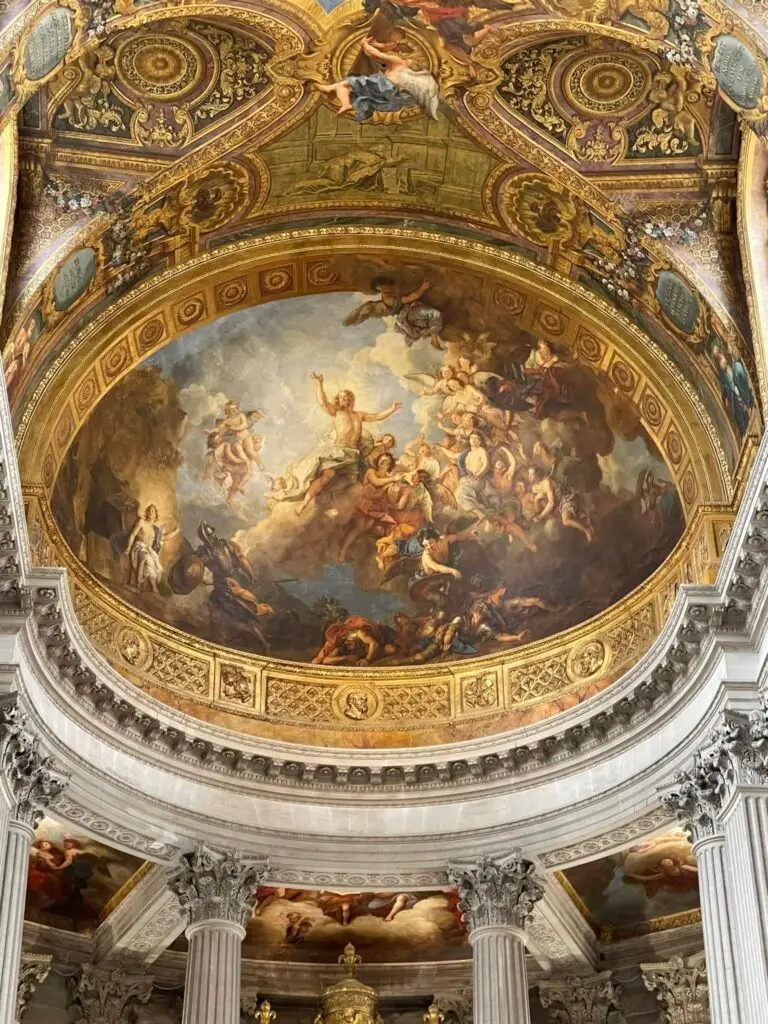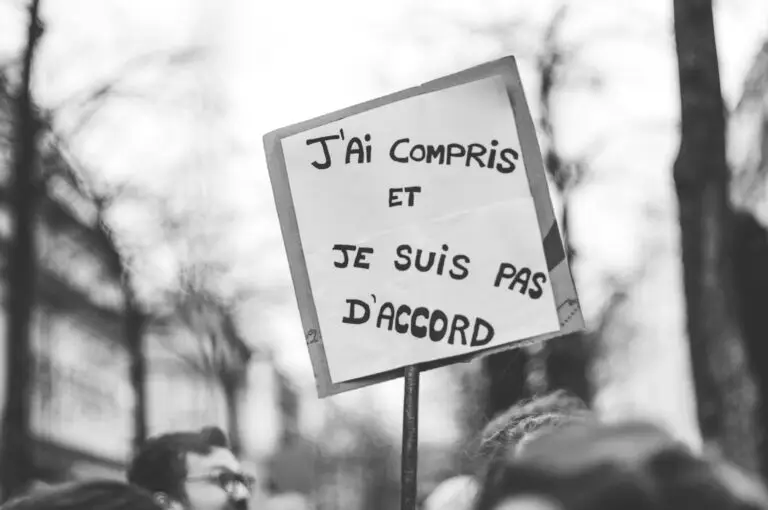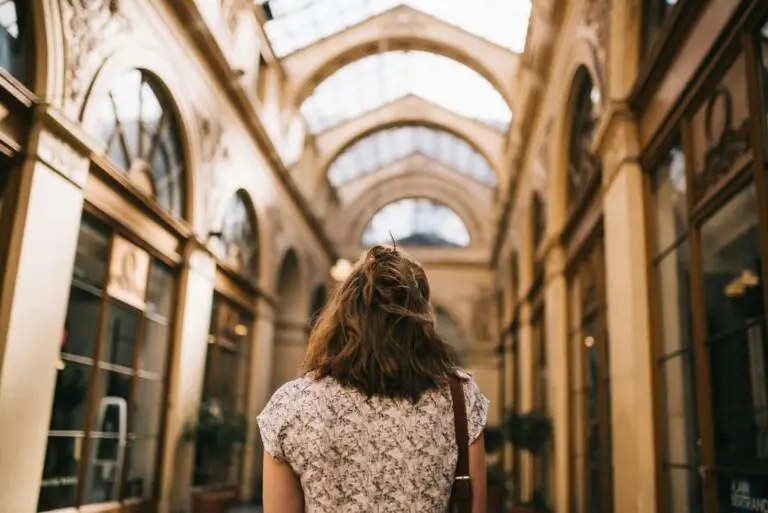If Baroque architecture had a personality, it would be that one friend who never shows up underdressed.
Think grandeur, drama, and just the right amount of over-the-top—because in the 17th and 18th centuries, subtlety was not in style.
This artistic movement didn’t just arrive in Europe—it swept in like a royal procession, leaving behind a legacy of opulent châteaux, grand palaces, and churches so lavish they practically demand a standing ovation.
More than just a pretty façade, Baroque was a political and religious power move. It was the architectural equivalent of monarchs flexing their wealth and the Catholic Church reminding everyone who was in charge. And whether in art, music, or theater, the drama was dialed up to eleven.
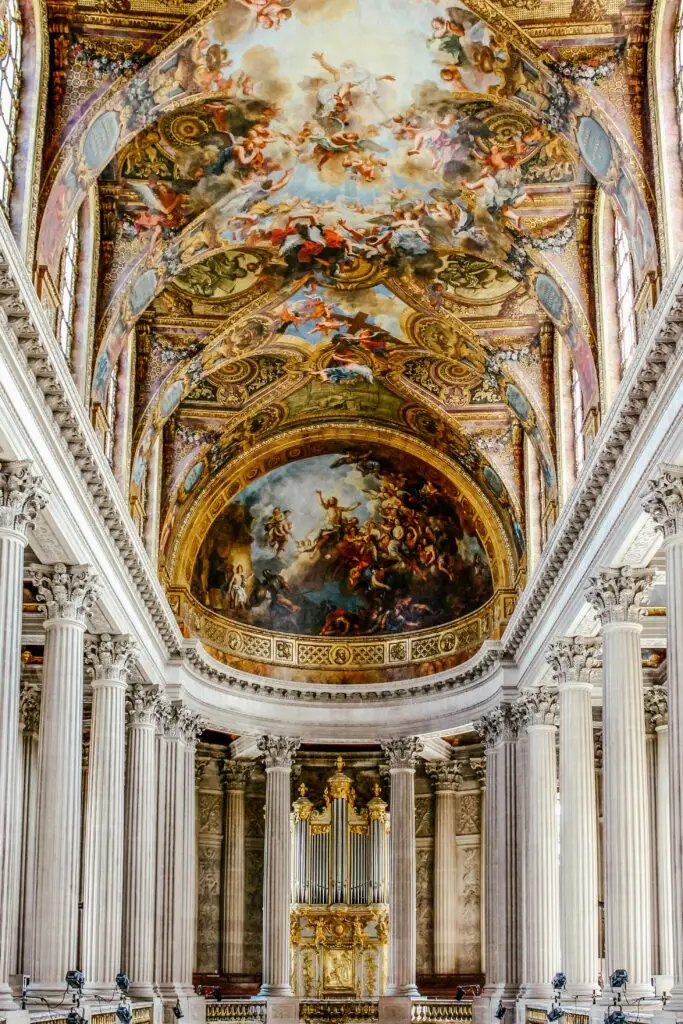
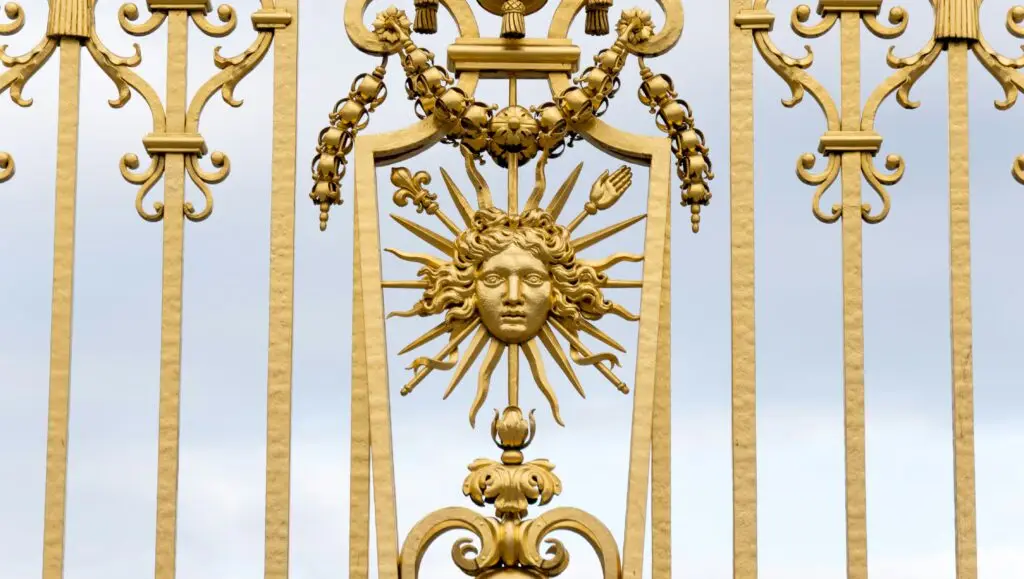
The Birth of Baroque: A Holy Power Play
Even today, Baroque architecture is impossible to ignore. From ornate Parisian churches to extravagant countryside estates, France is practically a Baroque museum with an open-air admission policy. But how did this dramatic style come to be?
Let’s take a look.
Baroque architecture originated in Italy as part of the Counter-Reformation, aka the Catholic Church’s big comeback tour.
With Protestantism on the rise, the Church decided the best way to win back hearts and minds was through architecture so grand and overwhelming that people would be too awestruck to argue.
Enter France, where Baroque took a slightly different turn. While Italian Baroque was all about drama and movement (think ceilings that look like heaven itself is descending upon you), French Baroque—aka “Classicisme”—was like the more refined, aristocratic cousin who still loved excess but with order.
The French blended all that Italian grandeur with strict symmetry, clean lines, and a touch of royal perfectionism.
The Origins: Baroque or Baroquen?
The word Baroque actually comes from the Portuguese “barroco,” meaning “irregularly shaped pearl.”
And yes, that was originally an insult.
Renaissance purists found Baroque’s elaborate, theatrical style a little too much—kind of like comparing a minimalist art gallery to a Vegas casino. They saw it as a departure from the Renaissance’s clean lines and balance, instead favoring curves, ornamentation, and ceilings that looked like heaven itself had opened up.
But while critics scoffed, Baroque thrived.
By the late 16th century, it was the go-to style for palaces, cathedrals, and basically any building that wanted to make an entrance. More than just a style, it was a statement—designed to dazzle, overwhelm, and remind everyone who was in charge.
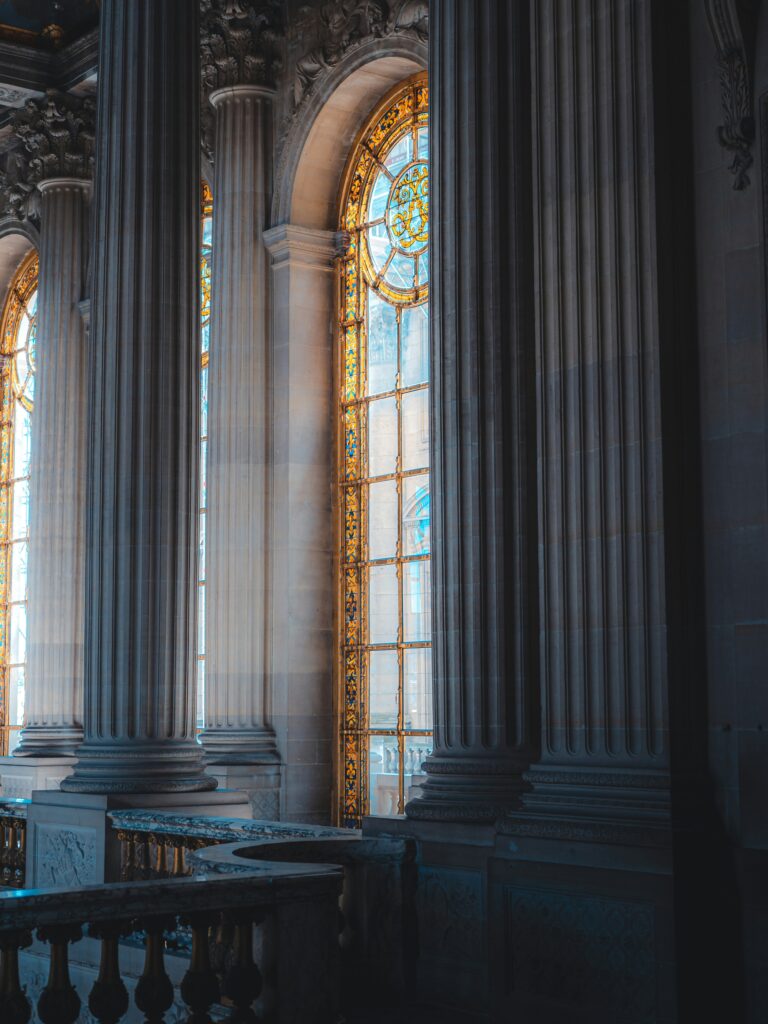
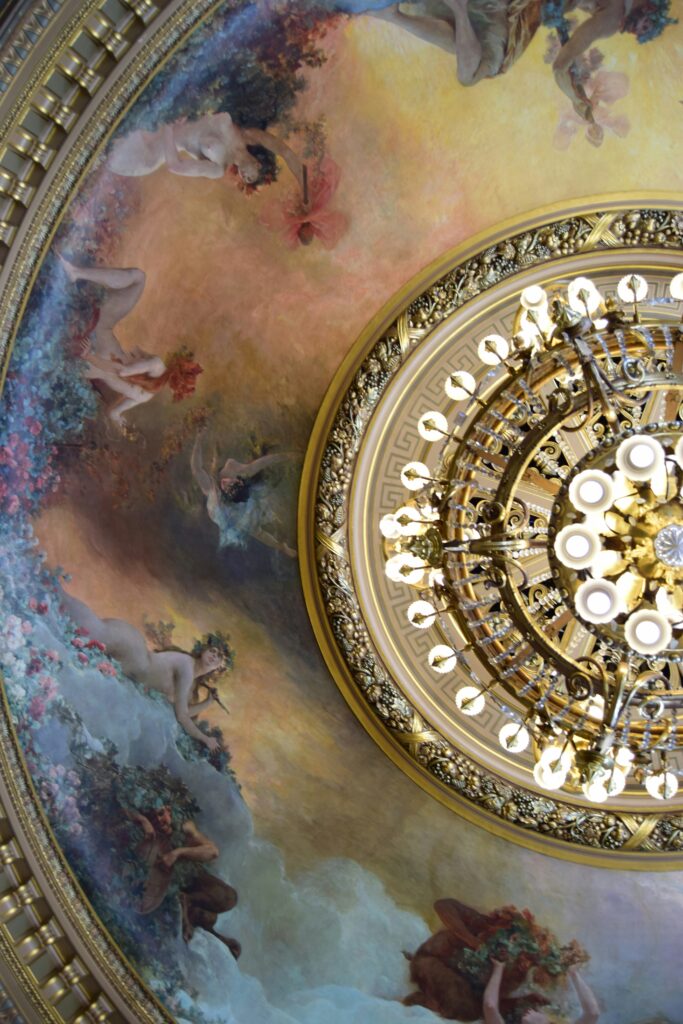
The Louis Effect: How One King Took Baroque to the Max
French Baroque started under Louis XIII (1610-1643) but reached peak fabulousness under Louis XIV, the “Sun King” (1643-1715).
And because subtlety was not in Louis XIV’s vocabulary, he made sure Baroque architecture became the ultimate symbol of his absolute power.
Want proof? Just look at Versailles.
It started as a humble hunting lodge (yes, really), but under Louis XIV’s direction, it mutated into the most extravagant palace in Europe.
Versailles wasn’t just a royal residence—it was a statement that said, “I am the center of the universe, divinely appointed, and you are lucky to bask in my reflected glory.”
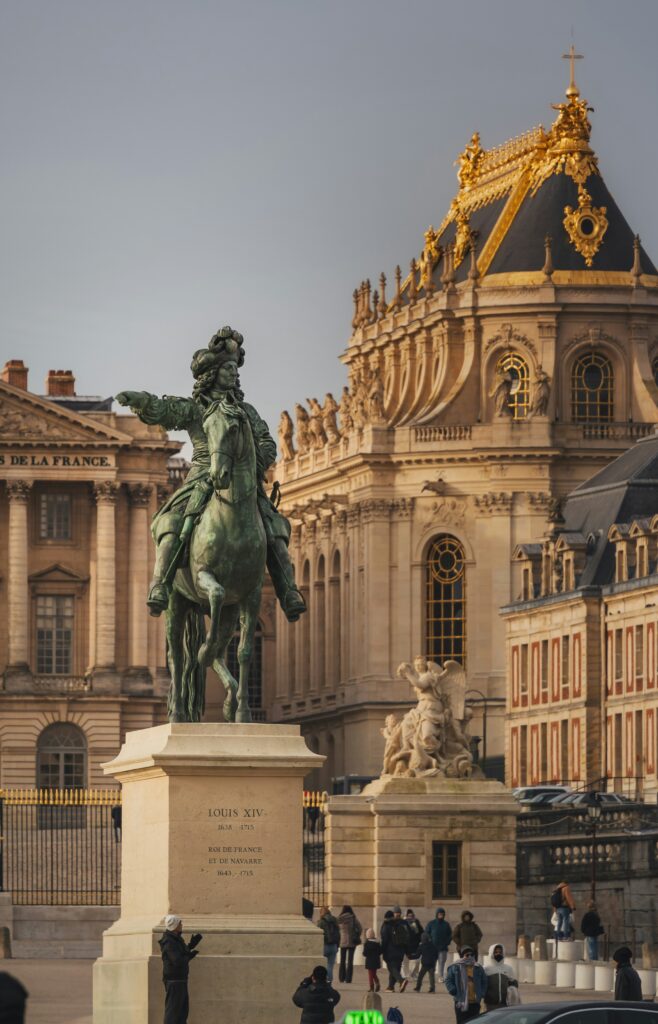
What Made French Baroque So… Extra
French Baroque wasn’t just about looking fancy—it had a formula for maximum impact:
Symmetry & Order – Unlike the wild, swirling designs of Italian Baroque, the French version was all about balance because chaos was for peasants.
Massive Scale – These buildings weren’t just impressive—they were meant to make you feel tiny in the presence of greatness. Everything had to be big and imposing because nothing says power like a building that makes you feel tiny.
Ornamental Overload and Dramatic Details – Every inch was decorated. If there was an empty space, someone definitely added a gilded flourish to it. Think sculptures, frescoes, and intricate carvings—the more, the better. (Negative space? Never heard of it.)
Theatrical Light & Shadow – Baroque architects were basically the first cinematographers, using contrasts of light and dark to heighten the drama. Architects used this dramatic lighting to create an almost cinematic effect, like the original IMAX experience, but with chandeliers.
Gardens as Grand as the Buildings – Baroque architecture didn’t stop at the front door. These palaces had landscapes designed with the same over-the-top precision, because why stop at architecture when you can control nature too?
Movement & Curves – Gone were the straight-edged, predictable designs of the past—Baroque loved curves, swirling columns, and sweeping staircases that felt like they were in motion.
Baroque architecture was about creating an experience. That’s what made Baroque so… Baroque.
Why it’s important:
Baroque architecture played a major role in shaping European cities and influencing later architectural styles. It was often linked to the power of the Catholic Church and monarchies, helping them assert their authority. Its dramatic and ornate style influenced not just architecture but also art, music, and theater during the same period.
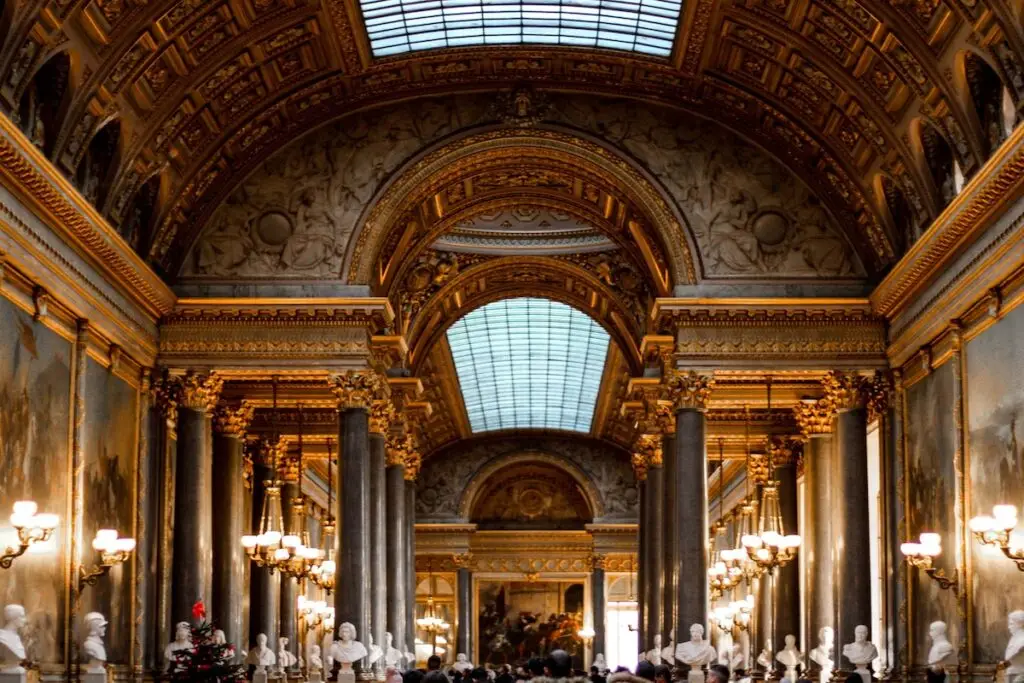
The Ultimate Baroque Showstopper: Versailles
If French Baroque had a mic-drop moment, it was Versailles. Designed by architects Louis Le Vau, Jules Hardouin-Mansart, and landscape master André Le Nôtre, Versailles wasn’t just a palace—it was a political power play wrapped in gold leaf.
The Hall of Mirrors – 357 mirrors reflecting chandeliers, gold, and garden views so stunning they could make a grown aristocrat weep.
The Gardens – A masterpiece of geometric perfection, complete with fountains, sculptures, and miles of meticulously manicured greenery.
The King’s Bedroom – Positioned perfectly so that Louis XIV could literally wake up and be greeted by the rising sun. Because, you know, he was the Sun King.
Versailles wasn’t just admired—it was copied everywhere. French aristocrats, churches, and government buildings across Europe all wanted a slice of that Baroque magic.
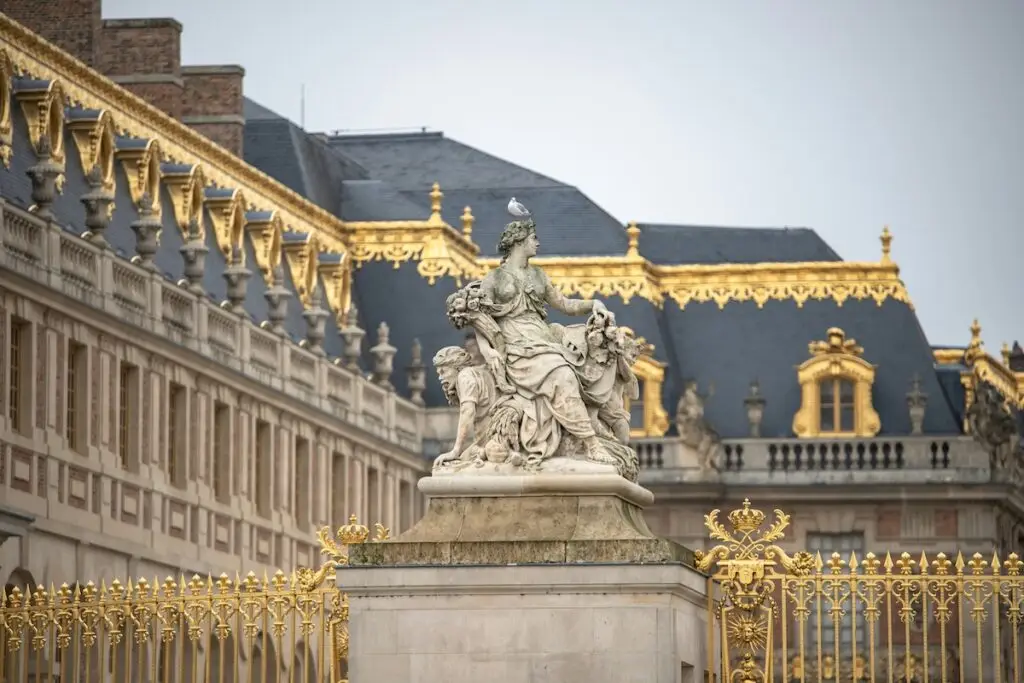
Churches Fit for Heaven Itself
It wasn’t just kings who went all-in on Baroque—the Catholic Church also took the “go big or go home” approach.
French Baroque churches weren’t just places of worship—they were designed to make you feel like you were stepping into the divine.
Église Saint-Louis-des-Invalides, Paris – Featuring a massive golden dome, because of course it does.
Church of Saint-Paul-Saint-Louis, Paris – A theatrical masterpiece, proving that if religion wanted to compete with the monarchy, it needed some serious stage presence.
Not Just for Kings & Clergy: Baroque for the Aristocracy
If you were a French aristocrat and didn’t have a Baroque château, were you even rich? The nobility followed Louis XIV’s lead and built mini-Versailles all over France.
Château de Vaux-le-Vicomte – So grand that Louis XIV literally arrested its owner out of jealousy.
Place Vendôme, Paris – A public square designed to remind everyone that Louis XIV was in charge, no questions asked.
Baroque’s Final Act: Enter Rococo
By the early 18th century, Baroque started to feel a little… heavy.
Society was shifting, and people were ready for something softer, lighter, and—let’s be honest—more fun.
Enter Rococo, the pastel, playful cousin of Baroque, where ceilings were covered in fluffy clouds instead of stern-looking gods, and gold accents were replaced with flirty swirls.
But even as Rococo took over, Baroque’s impact never faded. To this day, its monumental palaces, churches, and châteaux continue to stun visitors, inspire architects, and provide the ultimate backdrop for dramatic Instagram photos.
Exploring French Baroque Architecture Today: The 5 Best Examples of French Baroque Style
France is home to some of the finest examples of Baroque architecture, many of which remain accessible to the public. If you’re ready to step into the grandeur of French Baroque, here’s where to go:
- Palace of Versailles: No trip to France is complete without a visit to this iconic Baroque masterpiece. Explore the Hall of Mirrors, the royal apartments, and the meticulously designed gardens. The holy grail of Baroque excess.
- Hôtel des Invalides: Visit the Church of Saint-Louis-des-Invalides and Napoleon’s tomb. The adjoining military museum will also help you to appreciate Baroque design in a historic context.
- Château de Vaux-le-Vicomte: Located just outside Paris, this château offers an intimate glimpse into the grandeur of Baroque architecture and garden design. The palace that made Louis XIV go, “I want that, but bigger.”
- Church of Saint-Paul-Saint-Louis: Discover one of Paris’s most beautiful Baroque churches, nestled in the historic Marais district. Think of it as Baroque meets theater.
- Place Vendôme: Stroll through this elegant square in central Paris, a testament to the enduring impact of Baroque design on French urban planning. An entire square designed to make royalty look even more powerful.
The Origins of Baroque Architecture in France
Baroque architecture originated in Italy during the late Renaissance, rooted in the Counter-Reformation’s desire to inspire awe and devotion among the faithful. This was a crucial strategy for the Catholic Church as it sought to reaffirm its influence and counter the spread of Protestantism. By creating dramatic, emotionally resonant spaces, the Church aimed to draw people back into its fold and underscore the divine authority of Catholicism.
French Baroque, or “Classicisme,” developed its unique identity by blending the exuberance of Italian Baroque with a restrained classical sensibility. This hybrid approach resulted in an architectural style that balanced lavish decoration with symmetry and order.
French Baroque architecture emerged under the reign of King Louis XIII (1610-1643) but reached its zenith during the reign of Louis XIV, the “Sun King” (1643-1715). Louis XIV’s centralized power and patronage of the arts played a pivotal role in shaping this architectural style, which became a symbol of royal authority and divine right.
Key Characteristics of French Baroque Architecture
French Baroque architecture is distinguished by several defining features:
- Symmetry and Order: Unlike its Italian counterpart, French Baroque often adhered to strict symmetry, reflecting the rationalist ideals of the French monarchy.
- Grandiosity: French Baroque buildings were monumental in scale, designed to impress and overwhelm with their size and complexity.
- Ornamental Facades: Intricate carvings, statues, and decorative elements adorned facades, often depicting mythological or allegorical themes.
- Dramatic Interiors: Interiors featured elaborate frescoes, gilded moldings, and luxurious materials like marble and crystal to create a sense of opulence.
- Integration with Landscape: Many Baroque buildings, particularly châteaux, were designed with gardens and landscapes that complemented the architecture. These landscapes often included fountains, geometric parterres, and grand avenues.
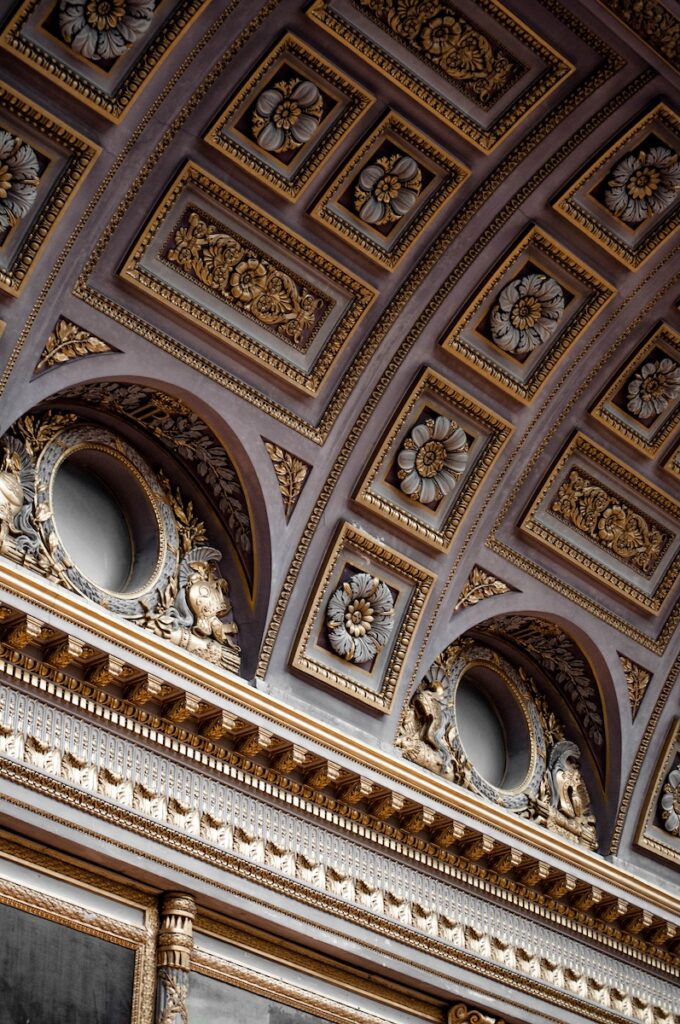
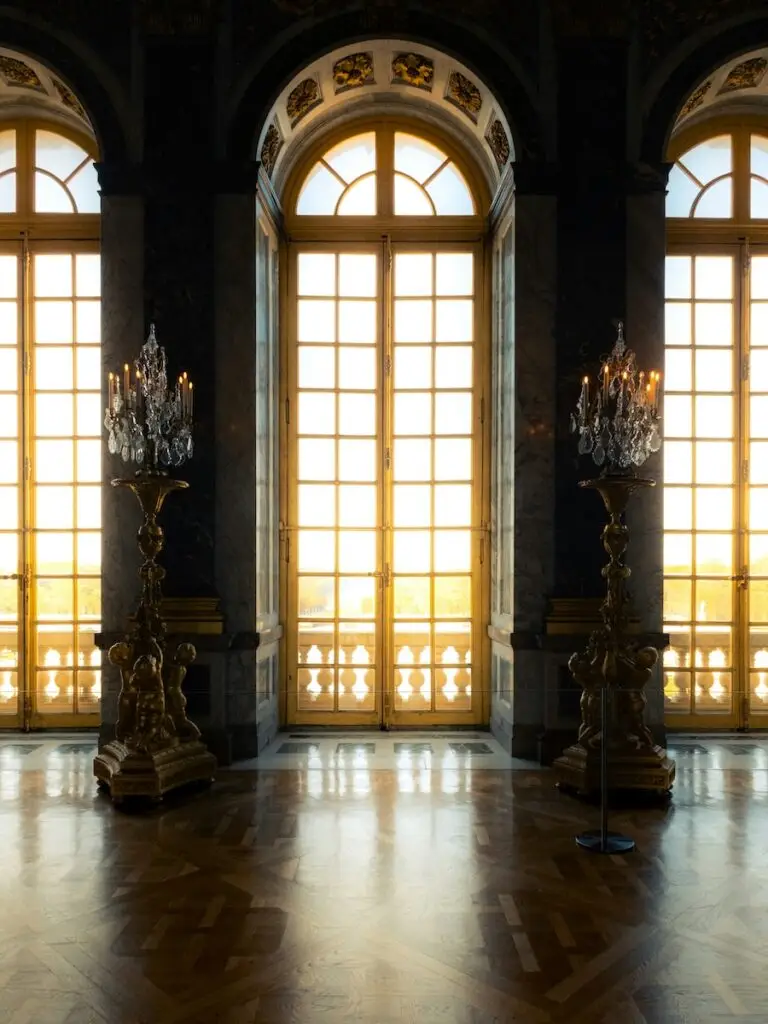
The Influence of Louis XIV and the Palace of Versailles
The Palace of Versailles is the epitome of French Baroque architecture. Commissioned by Louis XIV, Versailles began as a modest hunting lodge before being transformed into a sprawling symbol of royal power and artistic excellence.
Designed by architects Louis Le Vau, Jules Hardouin-Mansart, and landscape designer André Le Nôtre, Versailles embodies the grandeur and meticulous planning of French Baroque. The Hall of Mirrors (“Galerie des Glaces”) is one of its most iconic features, with its soaring ceilings, gilded decoration, and 357 mirrors reflecting the light of crystal chandeliers and the expansive gardens beyond.
Versailles set the standard for Baroque architecture in France, influencing the design of châteaux, churches, and civic buildings across the country. Its combination of art, architecture, and landscape design represented the height of French cultural achievement during the Baroque era.
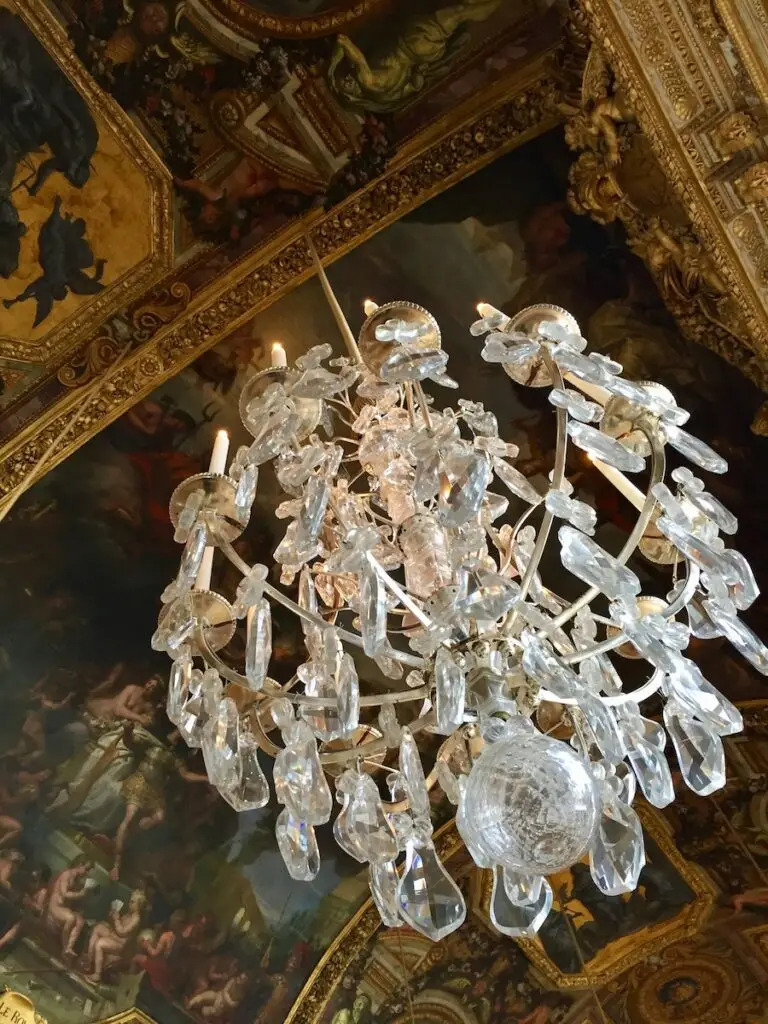
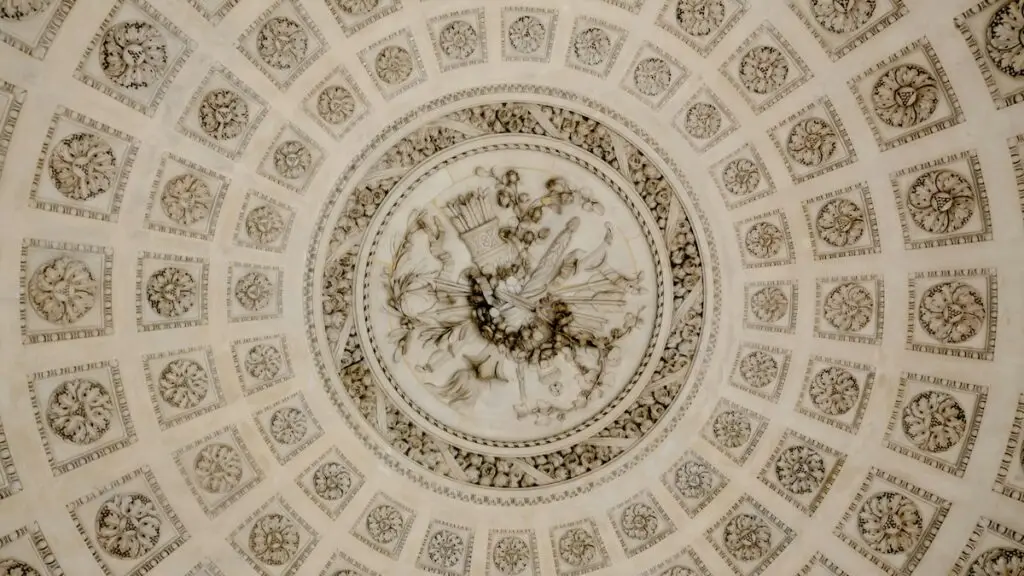
Religious Architecture: French Baroque Churches
While royal patronage propelled Baroque architecture in France, the Catholic Church also embraced the style to inspire worship and reinforce its authority. French Baroque churches are characterized by their majestic domes, ornate altars, and dramatic use of light and shadow.
One notable example is the Church of Saint-Louis-des-Invalides in Paris, part of the Hôtel des Invalides complex. Designed by Jules Hardouin-Mansart, the church features a stunning golden dome and intricate interior decoration. Its grandeur reflects the merging of religious devotion with state power, a hallmark of Baroque architecture.
Another significant example is the Church of Saint-Paul-Saint-Louis in Paris. Built between 1627 and 1641, it showcases the Baroque emphasis on theatricality, with its towering façade, harmonious proportions, and lavish interior.
Châteaux and Civic Buildings
Beyond churches and palaces, Baroque architecture found expression in the design of châteaux and civic buildings. These structures often served as symbols of wealth and power for the aristocracy and the state.
The Château de Vaux-le-Vicomte, built for Nicolas Fouquet, Louis XIV’s finance minister, is an early masterpiece of French Baroque. Designed by Louis Le Vau with gardens by André Le Nôtre, it inspired the design of Versailles. Its symmetry, grandeur, and integration with the landscape epitomize Baroque ideals.
Civic buildings like the Place Vendôme in Paris also reflect the Baroque style. Commissioned by Louis XIV and designed by Jules Hardouin-Mansart, the square’s uniform façades and monumental column create a sense of harmony and power, underscoring the centralized authority of the French state.
Final Thoughts: Why Baroque Still Slaps
French Baroque wasn’t just about style—it was about power, drama, and making sure no one forgot who was in charge. Whether it was Versailles dazzling foreign dignitaries, churches reminding people to stay faithful, or châteaux flexing aristocratic wealth, every building had a purpose: to impress, overwhelm, and inspire.
Even today, Baroque architecture is impossible to ignore—because, frankly, that was never the plan. So the next time you step into a Baroque masterpiece, just remember:
Go big or go home.

